

Church of the Multiplication

Church of the Multiplication
The Church of the Multiplication of the Loaves and Fishes, shortened to (The Church of the Multiplication), is a Roman Catholic church located in Tabgha, on the northwest shore of the Sea of Galilee in Israel. The modern church rests on the site of two earlier churches.
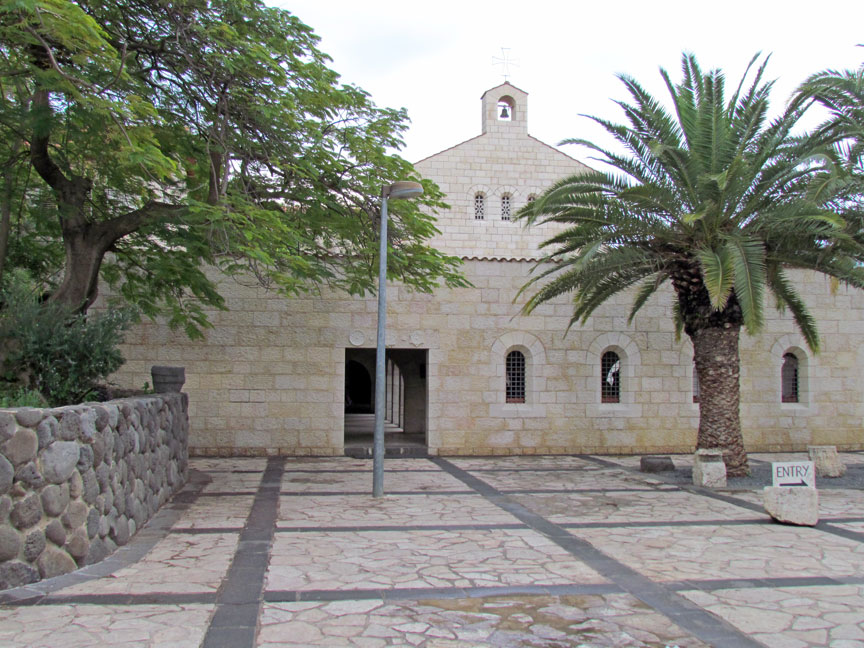
The earliest recording of a church commemorating Jesus' feeding of five thousand
is by the Spanish pilgrim Egeria circa 380.
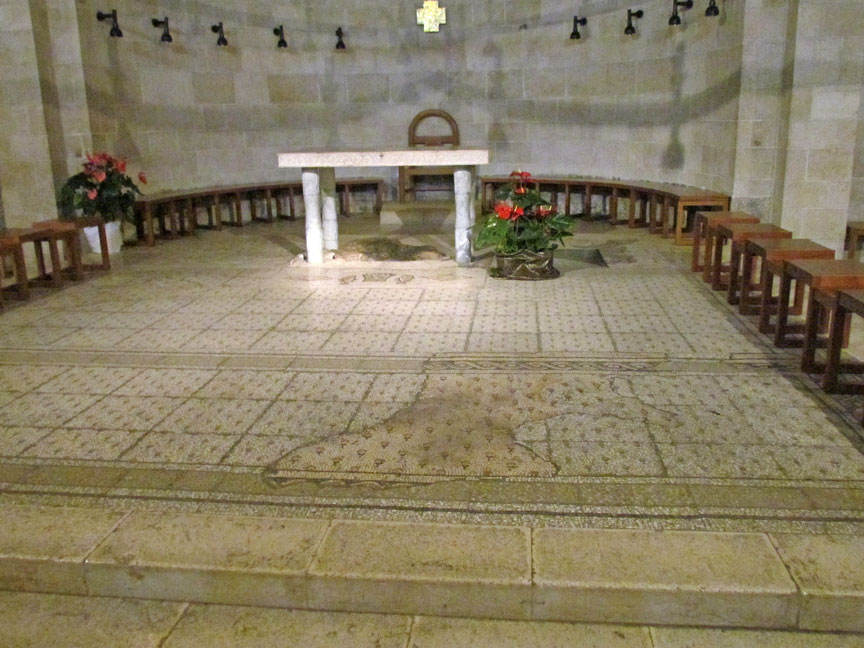
"Not far away from there (Capernaum) are some stone steps where the Lord stood.
And in the same place by the sea is a grassy field with plenty of hay and many
palm trees. By them are seven springs, each flowing strongly. And this is the
field where the Lord fed the people with the five loaves and two fishes. In fact
the stone on which the Lord placed the bread has now been made into an altar.
People who go there take away small pieces of the stone to bring them
prosperity, and they are very effective. Past the walls of this church goes the
public highway on which the Apostle Matthew had his place of custom. Near there
on a mountain is a cave to which the Savior climbed and spoke the Beatitudes."
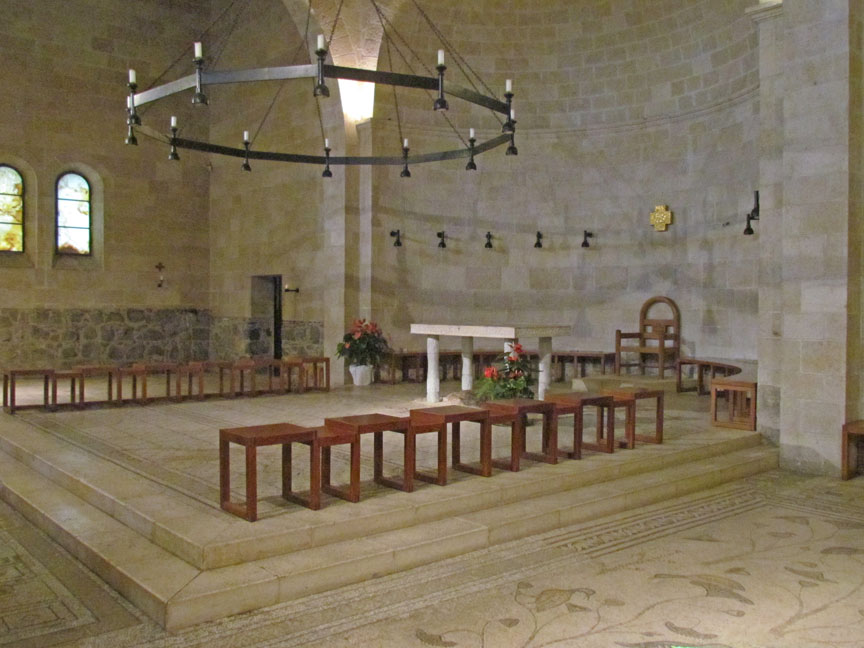
The church was significantly enlarged around the year 480 with floor mosaics
also added at this time. These renovations are attributed to the patriarch
Matryrios. In 614 Persians destroyed the original Byzantine church and the exact
site of the shrine was lost for some 1,300 years. In 1888 the site was acquired
by the German catholic society (Deutsche Katholische Palaestinamission) which
was associated with the Archdiocese of Cologne. An initial archeological survey
was conducted in 1892, with full excavations beginning in 1932. These
excavations resulted in the discovery of mosaic floors from the 5th century
church, which was also found to be built on the foundations of a much smaller
4th century chapel. The current church was built to the same floor plan as the
5th century Byzantine church. Since 1939 it has been administered by the
Benedictine order as a daughter-house of the Dormition Abbey in Jerusalem.
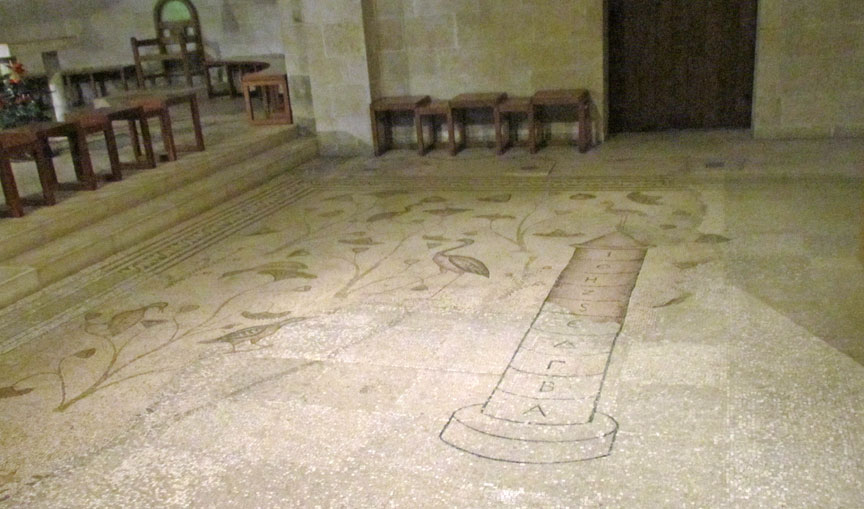
The interior of the church has a central nave and two aisles. The sanctuary is
backed by an apse with transepts on either side. Under the altar is a block of
limestone found during excavation, that is venerated as the stone on which the
miraculous meal was laid.
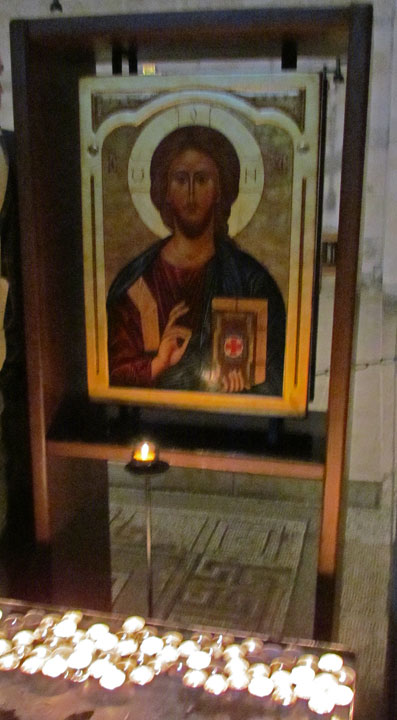
One of the main highlights of the church are its restored 5th century mosaics.
These mosaics are the earliest known examples of figured pavement in Palestinian
Christian art. The mosaics in the two transepts depict various wetland birds and
plants, with a prominent place given to the lotus flower. This flower, which is
not indigenous to the area, suggests the artists use of a Nilotic landscape
popular in Roman and early-Byzantine art. All the other motifs depict plants and
animals from the Galilee. The mosaics found in front of the altar depict two
fish flanking a basket containing loaves of bread.
Text from Wikipedia
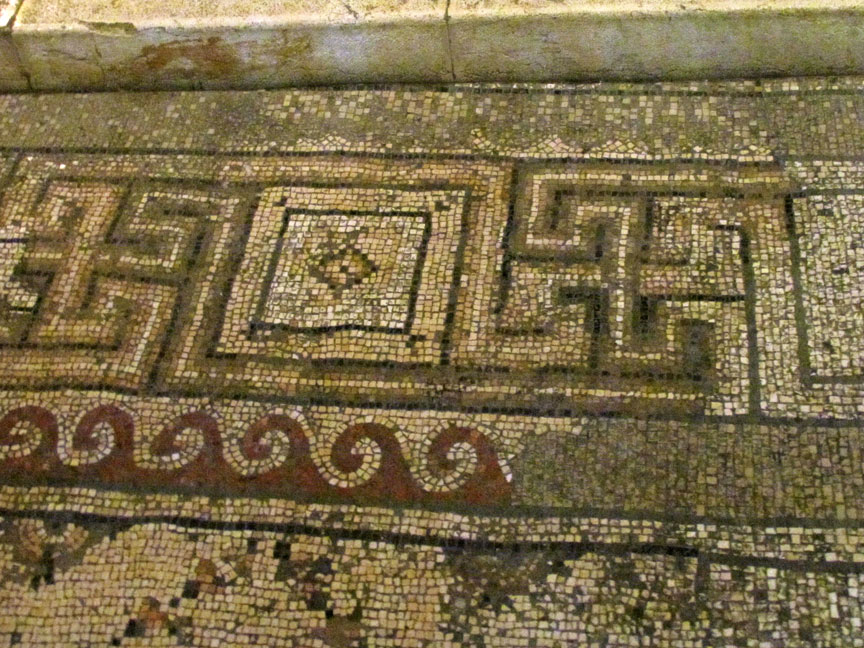
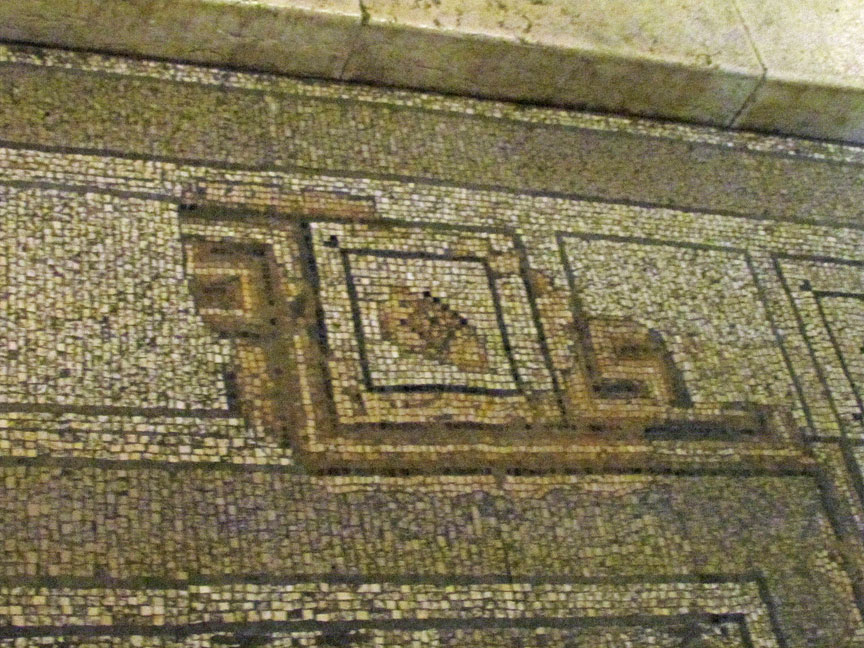
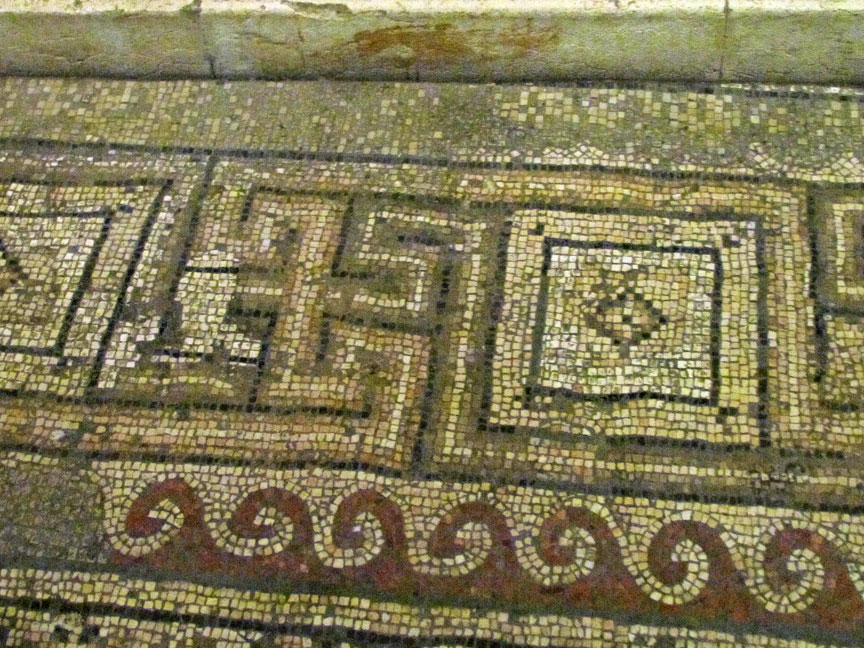

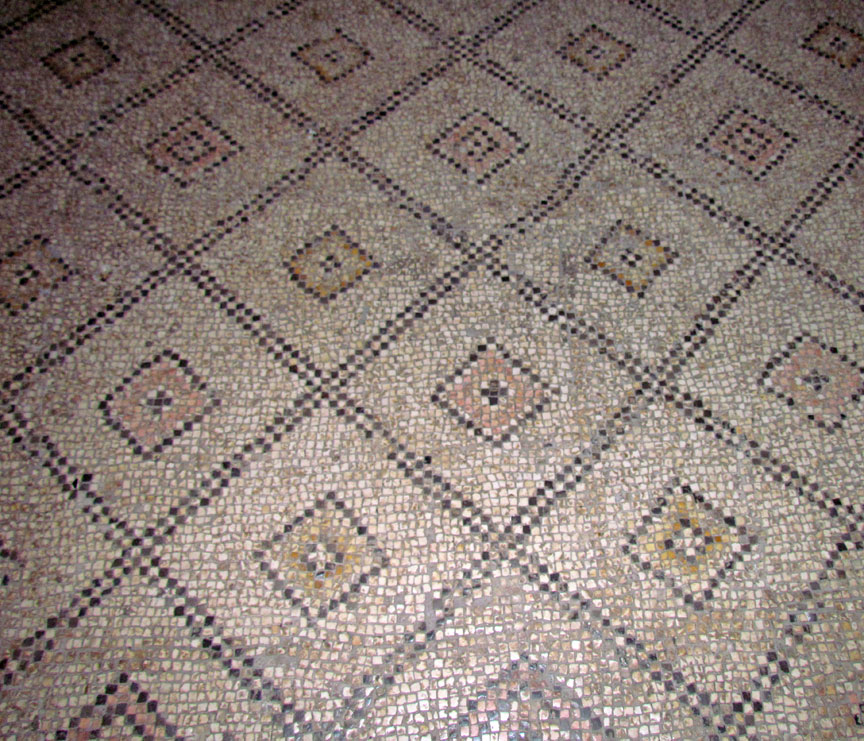
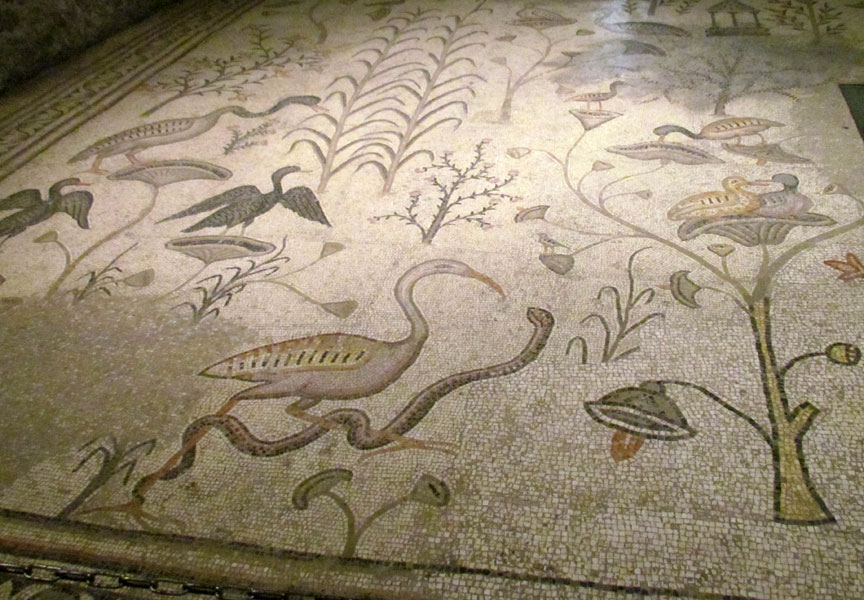
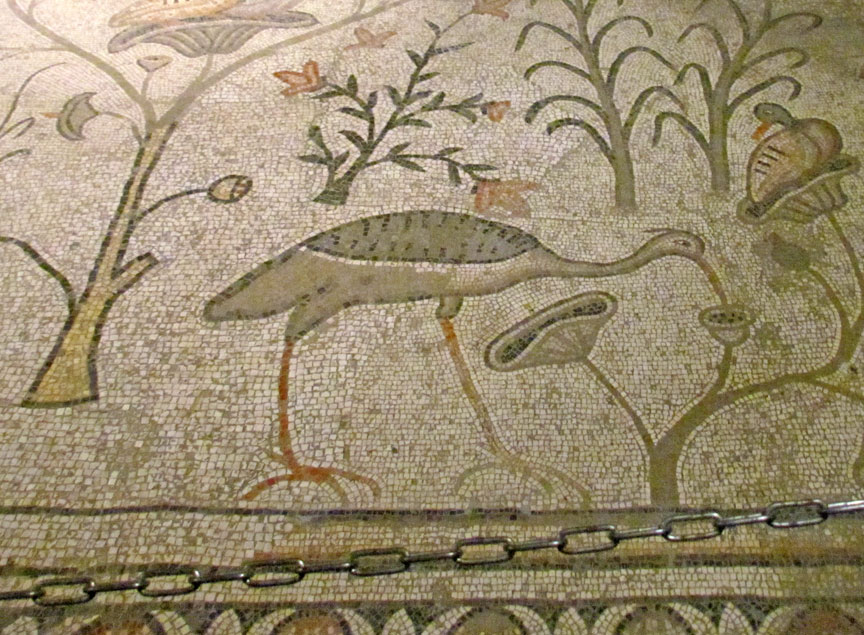
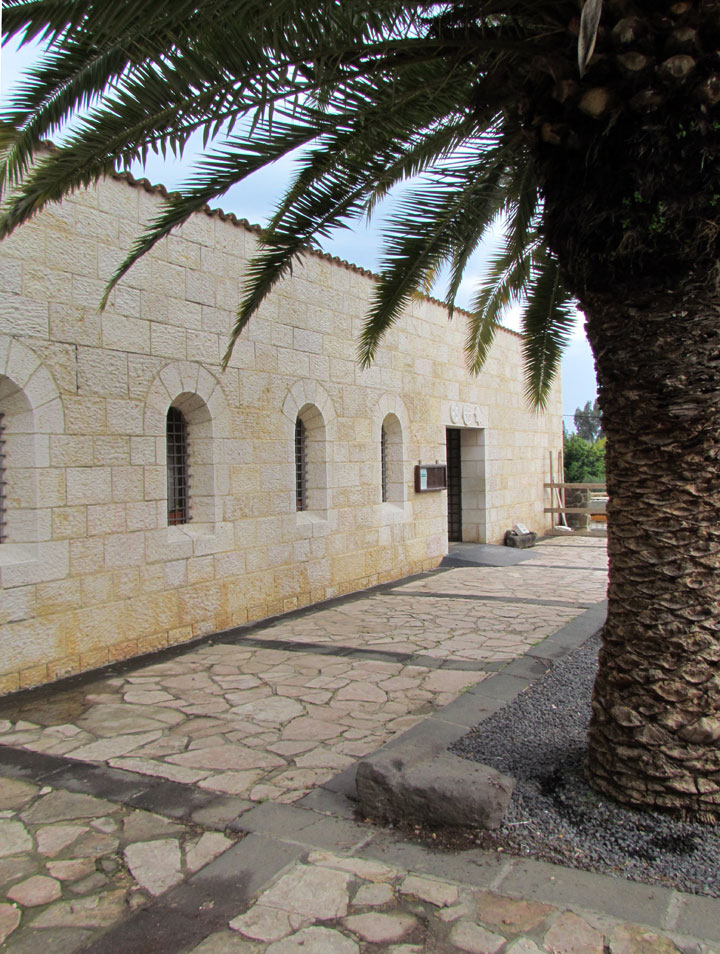

baptismal font